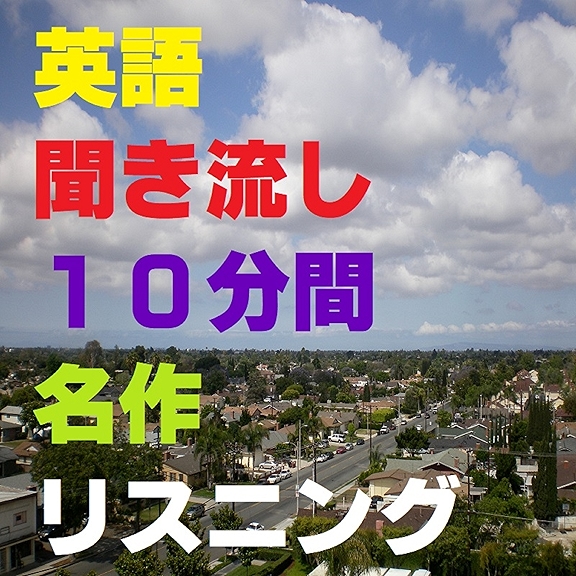
Episode Summary This week on Live Like the World is Dying, Spencer and Inmn continue to talk about bikes, how to go about planning a bike packing trip, and the usefulness of bikes in preparedness scenarios.
Guest Info
Spencer can be found on IG @spencerjharding or at www.spencerjharding.com
You can find cool bike resources at bikepacking.com, Gravelmap.com, Theradavist.com, RidewithGPS.com, and Bikepackingroots.com
Host Info
Inmn can be found on Instagram @shadowtail.artificery
Publisher Info
This show is published by Strangers in A Tangled Wilderness. We can be found at www.tangledwilderness.org, or on Twitter @TangledWild and Instagram @Tangled_Wilderness. You can support the show on Patreon at www.patreon.com/strangersinatangledwilderness.
Transcript
Live Like the World is Dying: Spencer on Bike Packing Pt. II
**Inmn ** 00:15 Hello and welcome to Live Like the World is Dying, your podcast for what feels like the end times. I'm your host today, Inmn Neruin, and today we're gonna be talking more about bikes. Bikes, bikes, bikes, like it's a.... like it's 2005 and we're listening to Defiance, Ohio for the first time. Bikes, bikes, bikes, bikes, bikes. [Spencer laughing in background] And it's part two of a two part episode of about bike packing. So if you didn't listen to part one, you might miss some things, which is mostly about some stuff about gear, some stuff about bike travel and what the scope of it is, and some other content that you may or may not have context for. But first, we are a proud member of the Channel Zero Network of anarchist podcasts and here's a jingle from another show on that network. Doo, doo, doo doo [singing a simple melody]
**Inmn ** 02:06 And we're back. Thanks so much for coming back on the show, definitely a week later and not twenty minutes later. Could your re-introduce yourself with your name, pronouns, and just a little bit about what you do in the world?
**Spencer ** 02:26 My name is Spencer Harding. My pronouns are he/him/his. I work in various bicycle related things. My current day job is photographer writer, occasional editor at a website called theradivist.com. We do a lot of cycle related content. I have worked as a bicycle mechanic. I've worked as a bicycle tour guide. I have worked in bike co-ops, I've done a whole lot of shit bikes is the jist of all of that.
**Inmn ** 03:00 Yeah, cool. Cool. Well, we're just gonna...we're just gonna kind of jump right back into it from last week. So before we kind of get into the nitty gritty about how to plan a bike trip--you know, we've talked about gear for a little bit--let's just Let's start off with some good, like good feel heady stuff. Spencer, why is traveling by bike a cool idea?
**Spencer ** 03:31 A cool idea? [uestioning the question]
**Inmn ** 03:33 Or good idea. A fun idea? Is fun, or is it...Is it harrowing? Is it both?
**Spencer ** 03:40 Yes. There's always going to be a chance for all of that to happen. The big picture reason why I like biking as a means of travel is that it strikes a really good balance between walking or hiking. And traveling by vehicle, like train or bus or plane, you miss so much because you're really cut off from the world. And you're usually traveling at speeds that are hard to really digest what's around you. Whereas a bike, you're typically somewhere between three miles an hour and like 20mph. Unless you're real fast or going down a big old hill. So I feel that biking affords more of that connection and really seeing and absorbing your surroundings. Whereas I feel that walking is almost too in the weeds of that sometimes, and they just really want to get somewhere, in a way that cycling allows you to really, when you need to, you can really cover a great amount of distance in a effective amount of time and energy without having to resort to a motor vehicle or a large public form of transportation.
**Inmn ** 05:01 Yeah, yeah, I've always been really blown away by really how quickly someone can travel on a bicycle. It's like, you know, like, when me and Marie did our bike tour across the country, it took us two months to ride from Oregon to Boston, you know. And, you know, we were hauling it, we were riding like 80 to 100 miles a day.
**Spencer ** 05:26 That's fast!
**Inmn ** 05:28 Which is even more ridiculous because we absolutely had like 60 pounds of gear each, you know. And, but then meeting other people who were the really lightweight credit card tourer who rode from LA to Boston in 22 days or something. And I was like, "What?!" It was utterly incomprehensible.
**Spencer ** 06:00 And I'm going to tell you that I know people who have written from Banff, Canada to the Mexican border almost entirely off road in 16 days without any support, carrying all have their own gear.
**Inmn ** 06:13 Oh my God. Yeah. Okay.
**Spencer ** 06:17 So the scale of human capacity to move themselves and whatever they need by bike is incredible, whether that's like.... that's the upper echelons of endurance and athleticism, but in that same vein, it's bonkers, what is truly possible. But for people like you who are maybe doing less than 100 or like 20 to 30 miles a day, like that's super accessible for a lot of people.
**Inmn ** 06:47 Yeah, yeah. And actually, that's kind of where I want to start today's conversation is around like...it's kind of about preparation, but it's in the realm of...so, if I'm someone who doesn't have a whole lot of experience biking and I want to go on a trip like this, like, how do I...like I want to go ride my bike around for a month, you know, whether that's all on pavement or on gravel. How do I prepare for that? Like, if I don't have a regular workout routine or something like that? Like, what is that going to be like for me?
**Spencer ** 07:34 So are we talking about like, fitness here, then?
**Inmn ** 07:39 Um, I think like, yeah. I'm talking about kind of like bodily preparation, where it's like, I want to go ride my bike a long distance. I've never done that. What is that...what is that going to be like? And are there ways that I can kind of, I don't know, like train, I guess prepare? Do I have to? Will my body just like, do it on the trip?
**Spencer ** 08:04 Bodies are really good at adapting to things. And I've always felt the first week or so of bike tour, everything's gonna hurt a little bit. Like, obviously, there's a lot of muscles involved. Especially in your legs and your ass and your sit bones. Your sit bones are going to be a focal point of something that's going to be hurting and have a lot of pressure and possibly a lot of discomfort. So I think training...training is a poor word to describe what I think is necessary for bike touring. I think it's more of a conditioning. Like if you ride your bike to work or you ride your bike to the grocery store or like just to go run errands or like once a week with your friends like that's bike touring conditioning. It's just how much time have you spent in the saddle? And if you spent zero time in the saddle, something's gonna hurt. And this goes back to the first thing we talked about with gear selection was "Does your bike fit you?" Like, in a multitude of ways. And is it comfortable? And if you ride your bike a little bit, you're probably going to know if your bikes comfortable or not. Or maybe you don't. And sometimes you won't feel how you body's gonna hurt if you ride less than 40 miles. And sometimes those long days, things break down, skin gets tender, chafing happens, and that's totally different for every single person. I know people who ride like the smallest tiniest, hardest seats, and their sit bones are great. And I've got wild--not wild--wide childbearing hips personally, so I need to ride very wide saddles to keep my sit bones happy. And it's your hands, your handlebars, your grips. I was talking to someone recently and they were like, "My hands hurt when I run my bikes," and they had a bunch of old cloth tape that was reused from like four bikes ago. And I was like, "Well, you might need some actual handlebar grips. And this might help with the vibration." So I don't want to get too in the weeds of that, but your hands are gonna hurt, your butt's gonna hurt, your legs are going to be sore from pedaling. And that's...these are all things that are going to happen. And as you ride and travel for multiple days, adjusting your bike, adjusting how you sit on your bike, and adjusting the times and the distances that you ride is all a part of figuring out how bike tour looks for you.
**Inmn ** 10:33 Yeah, I remember in...it was the first two weeks of bike tour, were hell. Like, everything hurt. And like, I thought my knees were gonna explode. And like, I'd never written more than 40 miles in a day. And I remember being like, "I might have to give up." And then I made just a micro adjustment in how high my seat post was, like half an inch or something, you know? And the next day my knee pain just like disappeared.
**Spencer ** 11:15 So if you're privileged enough to have access to somewhere in your...where you live, that does bike fittings, a lot of times--we're talking real small increments--make huge differences as far as bike fit and comfort. And I'll be riding with a lot of my friends. And I'm not a professional bike fitter. I don't make any claim to be, but I've generally been around bikes long enough that I feel like I can be like, "Hey, what if you tried this?" And like, go over and adjust their handlebars. And then like, a week later, they're like, "Oh, yeah!" So, that's a hard thing to figure out. I feel like 15 years into bike touring, I'm now...I just got my sit bones measured for the first time two months ago to know exactly what saddle I should be riding besides anecdotally trying a bunch of them. A lot of it is trial and error. You're gonna have to ride your bike and see where it hurts, and then what do I do about that? And talk to your bike nerd friends or go to a bike shop that you trust and ask them what they think. They probably have some ideas. Or there's a wealth of knowledge. The internet's probably the worst place to go for a lot of that information.
**Inmn ** 12:21 Oh no.
**Spencer ** 12:21 I'd go to someone you actually know or someone who can see you. Because there's always somebody with a hot take on the internet about bike stuff, especially fitting or what's the best bike saddle or bike for dah, dah dah. And they're probably wrong, or they don't know your conditions. So go talk to someone you trust.
**Inmn ** 12:40 Yeah. Is it kind of.... And I feel like this is kind of something that I have seen as a trend that I see a lot on things that we talk to about people like on this show where it's like, there's these activities that seem really intimidating--and like maybe rightfully so--but it's like, I don't know...like your bike tour doesn't have to look like other people's bike tour. Or your setup doesn't have to look like other people's set up. You can adjust it for what you can and feel comfortable doing. Question mark. I'm asking a horribly leading question that I feel like I know the answer to but....
**Spencer ** 13:18 And this ties in with, "Don't ask the internet," because you're gonna line up with a Surly Longhaul Trucker and a bunch of gear that's probably not right for what you actually want to do. It's a good place to start or to maybe to ask more fine-tuned questions. What I always tell people, like if you have a bike shop in town, go to that bike shop--if you feel comfortable, and the people that you're talking to don't belittle you or like make you feel uncomfortable--go there and ask them a genuine question. They probably will help you in a genuine way. Or if you have a friend that's in the bike touring, ask them what they use. Maybe you can borrow gear. Because everyone...like if you look on the internet, there's such a plethora of sizes and different bikes and styles of bikes and styles of packing gear. It's just...I wouldn't even know where to start now. You know? Like, there's a bunch of websites. So I work for The Radavist. Of course, bikepacking.com is a great resource for reviews and gear. And they have...we both do long lists of like, "Here's a great bike for under 2k" or "All these bags" and dah, dah, dah. Bikegeardatabase.com is a great one as well. So there are a lot of things. And even Adventure Cycling does reviews as well. There's a plethora of stuff out there, but it's overwhelming. So you probably know a bike nerd in your life. And if you don't, go to a bike shop and find one because they're gonna at least pare things down, hopefully, for you to something that's hopefully more digestible.
**Inmn ** 14:44 Yeah, yeah. And it's funny to hear numbers like that get thrown out, which is my next question. How much does it cost to get to...like, I want to go on bike tour. I know my bike is like probably not the best condition. How much is it going to cost me to like, get on the road?
**Spencer ** 15:09 That is a very broad answer.
**Inmn ** 15:14 I'm sure. I'm sure.
**Spencer ** 15:14 So we talked about this last time a little bit as well, like, yeah, you can ride on any bike. I welded a tall bike out of a bike I pulled out of a trash pile and a bunch of conduit from Home Depot. And I strapped a bunch of shit to it. And that didn't cost very much money, you know? You're talking about hundreds of dollars, maybe. If you're not familiar with the network of bike co-ops that are in a lot of cities all over the world, so bike cooperatives are run collectively--usually--they get some kind of city funding or they're just donation based, but they're...imagine a little bike shop, and they're there to help you fix your bike. They usually allow you to do work trade. So if you can't pay or afford to, you can come in. They'll help you work on your bike, and you volunteer for a few hours and you pay off the debt. They have used parts. They have people who know what they're talking about and can help you with those fitment questions, with a gear question like "Why does my bike not shift? Why does the saddle hurt?" And these are your very like lowest bar to entry ways that you can get access to people who know about bikes and possibly gear--or recommendations on those things--or even get a bike to start with. A lot of them will refurbished bikes or they have a build-a-bike program where you go through the whole process of, "Here's a frame and here's a bucket of parts. We're going to spend two months and we're going to build this into a working bike. And you're going to learn how to do everything along the way." And there's a lot of value in that. And I'm sure we're going to talk about preparedness later, but knowing how every part of your bike fits together is kind of the baseline. So you're probably looking--I used to always joke and I probably need to adjust this number for inflation--but "there's no good bike under $300" was kind of the old adage. Either you get a bike for like $200 and you're gonna spend $100 on parts. Or you get a $300 bike that's ready to roll. Depending on what you're looking to do, that can be very true. And if you buy a custom touring bike, you can be easily in the thousands and tens of thousands of dollars, because the bike world is absolutely bonkers at the high-end.
**Spencer ** 17:28 Does that answer that adequately?
**Inmn ** 17:31 Yes, that absolutely does.
**Spencer ** 17:33 Let's put the bar at drag a bike out of the trash to take to the bike co-op and there's your free bike. So let's say $20 to $20,000 is a good range.
**Inmn ** 17:44 Cool, cool, cool. Ya, it's helpful to have a range of, you know, like a range of prices where it's like.... Because it's like, when I go...when I was trying to do research about like how to...like, a bike or something to use for touring, it was like, I went on and I was like, "Do I? Wait, do I have to spend three grand to get on the road?" And I was like, "Surely no. That's ridiculous." And like, yeah, there were things that sucked about it. But I took an old steel frame and put some mountain bike parts on it that I got at the bike co-op. And then a big thing that I did run into was wheels, where I was like, I think I need stronger wheels than I can find that the bike co-op for free. Or like for 10 bucks, you know? But buying new wheels was way unaffordable for me, for how strong they needed to be. And so I ended up building wheels. I just like built wheels from rims that I got at the bike co-op and some spokes that I bought. And it worked. [Said in a way that makes it seem like it didn't work] My rear wheel at the end of the trip, literally, was ripping itself apart.
**Spencer ** 19:09 Yep. I've seen that happen. That probably didn't have to do with your building, though. I mean, sometime you put that much weight on a rim for 3000 miles it just starts to [makes breaking sound].
**Inmn ** 19:29 Yeah, just starts to rip itself apart. Um, but yeah. Golly, wait, sorry. What was my next question? Okay, so how.... If someone wanted to plan a trip, like they're planning their first bike tour, regardless of where that is, whether it's on pavement or bikepacking. Like what...how...how do you start to go about planning. For people who aren't maybe more comfortable with the idea of just hopping on their bike and seeing what happens?
**Spencer ** 20:07 Yeah. A fun story. When I did that tall bike tour, I saw a photo of Glacier National Park. And I was like, "You know what? That looks cool. I've never seen those mounds before. "And I literally went like Portland, Oregon to Glacier National Park and Yellowstone. Google Maps, where do I go? Which I think was a poor decision because it just took me on highways. So at a baseline, Google Maps has bike directions, and that will incorporate bicycle infrastructure depending on where you're going. If you're looking to do a long distance route, if you're in the United States, Adventure Cycling Association, based in Missoula, they have a whole network. They're all mapped out. They've got all kinds of resources. They're well established routes all over the country. It's great because people will know what you're doing along the way. There's usually expectations of camping. Those things are mapped out. You can have a very reasonable amount of time or like mileage per day that set out for you that's reasonable, that will get you to resupplies. So Google Maps is your base. Adventure Cycling is a great second stop. If you're looking to do more off road routes, bikepacking.com has a bunch of maps. They have a whole map of the entire world of established routes with route guides. Gravel Maps has a bunch of stuff. A lot of these will wind up using a program called--and a website--called Ride With GPS--which is basically a mapping software--to do day rides or long tours, there's a ton of resources. Searching anything on Ride With GPS is an absolute nightmare. So it's usually a place you wind up once you've found a route you're interested in. The mapping works really great. And that's a great resource. Strava has something similar. They also...Ride With GPS and Strava have heat maps. So if you're looking in an area and you're like, "Well, where do people ride here?" you can look at those maps and it will show you a median of all the accumulated routes that have been ridden. So you'll see where places that are more popular for riding, and like, "Oh, I can write here because it looks like people have already ridden here." So those are good. Those are good resources. Sorry, dogs barking in the background. But yeah, there's there's a lot of long distance routes that have been around for 30-40 years, like the TransAm, Pacific Coast route, Tour Divide, which we talked about. So I'd be remiss if I didn't shout out Bikepacking Routes. They're a small nonprofit creating its own database of routes very similar to what Adventure Cycling was doing 30 years ago, but they're focusing on single-track and off road. I'm actually lucky to be a regional steward for them--or I don't know what the word is for it anymore. I manage route down near Tucson, Arizona for them that's on their map. They have a bunch of routes that cross the country north to south, east to west, lots of connectors, and all that stuff. So Bikepacking Routes is also a really good resource for off-road route specifically.
**Inmn ** 23:20 Okay, cool. Cool, cool, cool. Um, this is like a funny kind of thread to move into--or no it just makes sense. So we've talked about how to get started, we've talked about kind of the vagaries of what gear you need, how to start planning a route, and now, it's kind of a big question, I guess, but this seems perfect and wonderful but what are what are the limitations of bike travel? It seems like there aren't any. I can ride my bike over...like across the sun with the right tires it seems like. [Both laughing]
**Spencer ** 24:03 If you buy the $3,000 bike, you can actually ride on the surface of the sun, my dude. Yeah, so whatever...whatever marketing tells you is 100% real and you can do it ever you want. [Sarcastic. Switches to earnes in the next sentence] So limitations are going to be your capability. So that might be fitness or any disabilities. I can be in your bike. And that can be in various gear choices that you make, depending on how little or much you pack, what your gear range is, what your tire size is. But those limitations are things that can be built around. I mean, inherently your body and the amount of food you can consume and the lack of sleep you can deal with will dictate how far you can ride a bike in any amount of time. And those limitations can be vastly different for everyone. But typically speaking, I feel like a normal human can ride 20 to 60 miles in a day, depending on elevation. And then on most surfaces. So like fire roads are pretty common. Paved roads are obviously incredibly common. Single-track makes things more complicated too. But those are going to be--
**Inmn ** 25:31 What is single-track?
**Spencer ** 25:33 So, think of hiking trails. So like the width of your body. Double track you'd think car tires are gonna make the road. If you've seen on off-road stuff, that's what usually we call a double-track. Single-track would be a hiking trail. So just the width of your foot, kind of like your shoulder width. Pardon the jargon.
**Inmn ** 25:56 No worries.
**Spencer ** 26:01 So your limitations are gonna be set by the decisions you make in your route choice and your gear choice and your bike choice and then in how prepared you choose to be or what kind of fitness you need to be in for whatever you're setting out to do.
**Inmn ** 26:24 Cool. Um, what are...what are things that can happen on any kind of trip that people should be prepared for? Like, do I have to be like a master mechanic to go on a bike tour? Like if something goes wrong with my bike like, what...what are big, common things that people should kind of be prepared for, either in route planning going wrong or your bike having bike problems, or, etc...?
**Spencer ** 26:59 So as far as route or any of these things, you always need to be flexible, I think, is the most important part. Like things are gonna go wrong. Something is going to break. You are probably going to break. And it's going to be in how you deal with that and--not break--but you're going to get tired or maybe you fall down and scrape yourself or cut yourself. These are all things that happen when we're doing any activities or are the usual risks. So flexibility and being able to adjust your plans or not be rigid in those things. The cool thing about bikes that I really love is if you get one of those little multi-tools at wherever, there's going to be an array of hex Allen's [wrenches] from 2 millimeters to typically 8 millimeters. And those alone and maybe a Phillips screwdriver, so we're talking a multi-tool that probably has that as well, that's 90% of bike maintenance right there in those tools, which is pretty sweet.
**Inmn ** 28:01 Yeah, I was surprised by.... When I went on my last bike tour I got one of those bike specific multi-tools from REI or something, you know. And it was like 50 bucks or something. And it had a passable version of almost any bike tool that I've ever used, you know? I couldn't like take my pedals off or do bottom bracket work, but like almost every other tool that I needed was on it.
**Spencer ** 28:39 And this is what we're talking about with bike co-ops, if you don't know how to fix your bike or how your bike is put together, take your whole fucking bike apart andput it back together with the multi-tool. And then you know. Or figure out what you can take off with the multi-tool and then put it all back on. And then you're gonna know like, okay, if this breaks or this falls off, I know how to put it back on. And that's a little bit like hyperbolic. But I think knowing that...if you take a class on basic maintenance at a bike shop or at the local bike co-op, they're going to teach you a lot of things you can do mostly with a multi-tool on the side of the road, which is super accessible. You're not...if you go to a bike shop, there's like that last 5% of tools that cost like thousands of dollars and they're in a drawer. They get used like once a month and they're terrifying. And most bikes are never going to need to use those tools out in the wild. You know? But, never say never. So, most bike maintenance is just adjusting bolts, and there's usually going to be one of those hex sizes that's on a bicycle specific multi-tool. Or you just go get a set of L Allen keys at Walmart or Home Depot. Hell, Home Depot has them for free sometimes if you just, you know, walk out. But the biggest thing that's a concern is tires and, if you're using them, tubes.
**Spencer ** 29:12 Should you not use tubes? Convince me.
**Spencer ** 30:16 We're going to talk about the fact that tubes don't exist nearly as much as people think they do anymore. Yeah, it's a crazy thing. So first of all, let's talk about it. So you have your bike rim. So, the wheel consists of a hub, has all the spokes that hold the rim to the hub, and then on that rim, you're gonna put a tire. And the tire usually has a tube inside of it that actually holds the air and gives you the squishy loveliness that makes riding bikes a pleasurable experience. But there's lots of thorny things and nails and glass on roads and services that are trying to make that thing not hold air anymore. So the biggest skill I've known people to want to have for bike touring is being able to fix a flat tire. So that typically involves removing your tire, removing the tube, using a glue and patch that are available at any bike shop you have ever been to for like two bucks. You get like eight patches. So you can really extend the life of your tubes that way. It's not a fun process. You have to take your, usually, like take your whole wheel off. If you use tire levers, which are its own specific tool that you definitely have in your kit in addition to that bike specific multi-tool. Sometimes you can do it with your thumbs if you've got like rock climber strength, but you're probably going to scream and yell and curse at somebody trying to get a tire on or off at some point in your life. And that's okay. We've all been there. So once you patch at tube, you put it back in and you pump it back up. Bike pump is going to be something you're going to want to have. They make all of those little bike specific things in all kinds of sizes. I've seen people biking with like your floor pumps at home just like bungeed recklessly on the back of their bikes. They got tired of the tiny pumps they were carrying.
**Inmn ** 32:03 Wow. Relatable.
**Spencer ** 32:05 But, it's 2024. The tubeless revolution is here. It's been here for a long time. If you buy a new bicycle, you know, if you're getting into a $1,000 bike. If you're buying a lower-end bike, you might still be using tubes. Anything like more modern, getting slightly more higher-end, we're going to be running what's called "tubeless." So it's kind of like a car tire. So the rims and the tires are designed differently to mesh and interact with each other the way a car tire interacts with a car rim. Just pump it up. It makes a big scary noise and it pops in and locks the beat of the tire to the rim. Cool thing about bikes that you can't do on cars is you can fill it with a latex sealant.
**Inmn ** 32:58 The goo. Insert the good.
**Spencer ** 33:01 Yes, you inserting the goo into the tire. So with cars, rpms that care tires are at, you can't have anything in there that's sealed in for a long time because it affects the weight of the wheel too much, due the little revolutions in momentum. Bike wheels, for the most part, don't move that fast where it's noticeable. So they've develope latex sealant or goo, or goop. It's kind of like slime. You can get slime at Walmart that like works for like bike tires. That stuff sucks. It works in a pinch. There's better stuff we have nowadays, but basically what.... So the inside of your tire, it's just air at this point. There's no tube. You put the latex sealant in there. It stays liquid for a certain amount of time depending on climate. a,nd which brand you get. There's all kinds of different things. But basically ammonia, latex, and some kind of like glitter or rubbery compound. So what happens is if you've got a flat with a bike with a tube and a tire, the nail is going to go through the tire and then it's going to pierce the tube. The tube is going to go flat. You have to pull the whole tube out, patch the tube, put it back in. Hopefully it holds. With tubeless, depending on puncture size and a bunch of factors, nail goes in. You pull it out. You should have some liquid sealant in there. You move that puncture points to the low end so there's like a pool of that sealant. The latex sealant when it gets supposed to air kind of goopifies. And it will typically clogg most small to medium punctures without you having to do anything.
**Inmn ** 34:48 I mean you have to pull the thing out but...
**Spencer ** 34:50 You have to pull the thing out, but if it's in there, you can just leave it in there if it's not hurting anything.
**Inmn ** 34:54 I see.
**Spencer ** 34:57 A bunch of plug kits you can get as well. It's similar to like plugging a car tire. Those are like big things that look like strips of bacon that you like plunge in. And there's a whole host of stuff for that. But basically, you get.... This could be... Okay, tire choice. So there are tires that are more durable and there are tires that are less durable. And that's going to be how thick they are in various parts and how much sidewall protection they have. If you get a more durable tire for bike touring, it's going to last longer, it's going to be more puncture resistant, and it's going to do better once it's punctured to possibly seal that puncture. If it's a thicker tire with that sealant. If it's a really thin flimsy tire that's lightweight, it's probably going to get punctured or torn easier and it's going to be harder to repair.
**Inmn ** 35:52 I feel like this is the area that I kind of skimped on when I was on bike tour and I've never regretted it more. I changed.... I changed close to like, probably 60 flats in the course of two months. And so the really annoying part that you don't quite realize is, in a lot of cases, you have to completely unload your bike in order to fix a flat.
**Spencer ** 36:26 That's another part too. So, think about that in your baggage concerns, if he could lift your bike or get it off the ground and.... So tubeless is awesome until it's not.
**Spencer ** 36:37 So what goes wrong is either the hole is too big and you're just, all of a sudden you're riding, and you feel this faint white goo all over. It's usually kind of a milky consistency. It's sticky. You're like, "Oh shit, my tires, spuing sealant. I have a hole." Hopefully it fixes. Sometimes the puncture is just too big and it's like a tear. In that case, you can get your real crust punk skills out and you get the floss out and you can sew your tire back together so you can close that. And that does work. There's a lot of things you can do and hopefully it seals. But when it doesn't work or like your tire is too bad. So in order to get a tubeless tire onto a rim, like setup, you have to use an air compressor. It punches the tire on with a lot of pressure all at once. Depending on the tire-rim combo that can be very hard if not impossible to do with a small hand pump. So if you do get a flat and you ride and then that like kind of seal along the edge of the rim where the tire is seated to them breaks, that can be a really hard thing to get back if you're in the middle of nowhere. Co2 cartridges are good for this. They can pump a lot of air in. Sometimes that works. So that can be like a big kneecap of tubeless systems, a big puncture or you lose the seal on the bead. The cool thing about it is--but it's gross--is you can just carry a bike tube and you can then put a bike tube inside. It'll be covered in white goop. But as a failsafe, you can almost always still use tubes. So a lot of people do still carry tubes as an emergency if they have a tubeless system. There's also really cool new.... Oh, what are they made of? God I have one. I just gave one to my friend. They make these new tubes. They're not butyl rubber, there's something...some other kinds of new magical material, but they're like a quarter the size. They're like this big folded up. It's awesome. Sorry you can't see what I'm saying. They're like a third of the size of a regular bike tubes and they supposedly last better. I'm signaling the Inmn over video chat, which none of y'all are gonna see. So there's...that's always your failsafe is a tube, basically, if you have tubeless. Tubless is awesome if you live anywhere sharp and spiky like the desert or you do a lot of commuting with glass and shit like that, tubeless is hands down the way to be if you can. Learn how to use it. learn how to fix it the same way you would learn how to fix a tube if you had it. Just so you know what you need. But 99% of time, it's awesome and that 1% of time it goes terribly awry, but that's pretty good odds.
**Inmn ** 36:37 I see.
**Inmn ** 39:33 That is that is pretty good odds. I feel like I'm really interested in this from the perspective of like convincing myself to go tubeless.
**Spencer ** 39:50 Inmn, I have a whole bike shed. Come over. We'll get we'll get you set up.
**Inmn ** 39:53 Okay, okay. I do hate changing tires.
**Spencer ** 39:56 You live in the desert. You should.... you deserve tubeless. You deserve to never fix a tube again after those 60 on that tour. You just don't need to.
**Inmn ** 40:06 Never. Never again. To kind of switch gears a little bit. A pun, weirdly unintended. I'm, wondering how bikes as opposed to other forms of transportation can fit into different preparedness models for, you know, anything that we might be encountering, either a change in...a drastic change in our world like, thinking about a post-industrial world or a post-car world-and not like post-car in the Green Revolution way. I'm talking about like post-car in that like we live in a furtherly apocalyptic hell world. But also just, you know, in disasters and like needing to disappear for a few days. Like how do/do bikes fit into preparedness models?
**Spencer ** 41:11 I mean, we're looking at a bike and we're seeing the most sustainable, accessible means of transport...like self-propelled transportation that's ever existed as far as I can think of. So it only requires you to be on it and pedaling it. So you need to have like water and food to propel yourself. And it can fit between...like you can ride anything from single-track to a road. So any kind of surface that it needs to be. If there's stairs, put your bike on your shoulder, if there's a steep hill, you can walk up it. If there's a fence or a barricade, pick your bike up, put if on the side and hop over. You're not encumbered by things like traffic, typically. You can get between cars, if there's a big line of cars, if everyone's trying to go the same direction, and there's a traffic jam like or there's an accident or there's a chasm. Like, all of those things, the accessibility and the means, the way you can just get on a bike, or pick it up and move it and carry it entirely under your own power, I think is an incredible tool for preparedness. And if you understand how to then attach things that bike in a way that makes it accessible for you to carry things distances, I think that's an incredibly useful tool to have in your back pocket. If you have some of those bags or you have those kitty litter panniers that you used 10 years ago and you have them in your closet. Like gas.... I mean we saw during COVID like gas, people got scared and they hoarded gasoline. And like all of a sudden, you can't drive your car. But you can ride your bike.
**Inmn ** 42:52 Yeah, I feel like in a post-industrial world gas is gonna like instantly become unavailable.
**Spencer ** 43:03 Yeah, and just you see how quickly like... I mean, if we listened to like It Could Happen Here, the first season, like talking about how quickly supply chains can go awry. And especially in regards like oil and gas and things like that. Like, it doesn't take much to disrupt those kinds of...those systems in place. And all of a sudden, there's an incredible scarcity in just a few days. And then your mobility is pretty limited if you've only relied on cars or something or walking, you know? You could double, triple, quadruple the distance, you could easily walk in a day on a bicycle while expending the same, if not less, energy and moving more things with you at the same time.
**Inmn ** 43:48 Yeah, people have some pretty wild...like I've seen some like pretty wild bike trailer setups for things that people are somehow bringing long distance. And this is, you know, this is on pavement for the most part, but like, I don't know, yeah, I've seen some wacky bike trailers.
**Spencer ** 44:05 Wacky bike trailers,




















